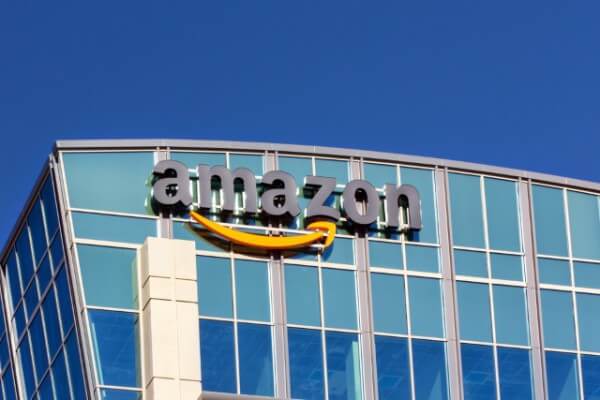
In this article, Asim Ansari, pursuing Diploma in Entrepreneurship Administration and Business Laws from NUJS, Kolkata discusses the business structure of Amazon in India
Introduction
Amazon is an American international e-commerce company. It was Jeffrey Bezos, who started the company in the year 1994 in the United States as an online bookstore, later expanded into other categories. It was launched in India in June 2013. Four years back, Amazon had no infrastructure in India, but now it dominates the e-commerce market as a whole. It was started with a perception that in India the company will not stay for long like China and other European countries. After getting dominated by its e-commerce competitor in China, Alibaba.com, Bezos decided to capture the Indian market.
The reason behind Bezos formation in India was its billion-plus headcounts which were four times as big as the United States as and more than double in Europe. As per the research, the yearly growth rate of internet users is highest in India with around six million users joining every month. Amazon has consumer market in the United States but it is growing the e-commerce consumer market in India. Amazon in India works on complex business challenges to innovate and create most efficient solutions.
The Business Model of Amazon in India
The e-commerce industry generally consists of eight key components i.e. market opportunity, value proposition, competitive market, revenue model, competitive advantage, market strategy, management team and organizational development.
Value proposition
Value prepositions specify how the products and services are put together in order to fulfil the customer’s need by the company. In small villages and remote areas where the internet access for the customers was challenging, Amazon India enlisted mom & pops as their delivery partners. Now, residents can go to their stores and use their internet connection to select and place orders from the online store. The store owner is responsible to record the orders and alert the customers when the order is delivered to the store. The store owner collects the money and sends the money to Amazon minus the handling fees. This initiative reported increased sales of their own store products.
Market Opportunity
Amazon mainly targets to the middle and upper-class people who have a bit experience in the field of technology but they don’t have much time to go out shopping. Taking this into consideration Amazon has successfully created a giant in the e-commerce industry, where one can browse and can buy anything getting it delivered at remote locations. The Amazon got a grip on the Indian market as it kept in mind with a catchphrase like ‘Aur dikhao’ which helped them carve a distinct space in the consumer’s mind.
Competitive Market
Amazon acquired many other IT & e-commerce startups like jungle.com, pets.com, audible.com, IMDB.com, Woot etc for providing high value to their customers using existing technology of the acquired partners at low cost. The company CRM records the buying behaviour of the customer which enable them to offer individual items, either they bundle them or combine it with some offer, based on the behaviour demonstrated through items visited or purchased.
Revenue model
Every e-commerce revenue model includes campaigning, advertisement, promotion, subscription, sales fee, and affiliate revenue model. The basic aim of revenue model defines how a firm generates a higher return on low investment and profits.
Market Strategy
Amazon strategy involves selling a wide range of products at low prices, discounts via direct selling or marketplace. The Indian Government plans to allow foreign companies to start manufacturing their products in India and start selling to the customers directly over the internet. Amazon faced the challenge as the business model differs slightly from the model in the U.S. In US Amazon sells their own inventory of toys, books etc. But the due change in the Indian laws, Amazon would have to start making their own products to take the advantage of making business in India. Because of this rule, Amazon in India acts as a middleman between buyers and sellers and doesn’t sell its own inventory.
Organizational Development
To maintain a balance between all the functions and skills necessary in order to carry out each process in the company requires suitable candidates for the job to perform the role effectively and efficiently.
Challenges Faced while Structuring in India
Amazon initial business model was fairly simple which source the product from the wholesalers and sell it directly to the ultimate consumer as when order received over the internet. As later company expanded its product line, it created an ecosystem in the roots of wholesale purchase of goods, huge warehouse for storage likely known as fulfilment centres, and made contracts with the national and regional carriers who shipped the products throughout the country.
Bezos vision and user-friendly made the company to be the first online retailer to have over one million customers. While stepping to India, with its billion-plus headcounts and largely unused online marketing the company faced with a situation of good news along with the negative one. The good news included that more than 65% of the population was under age 35 has risen in cell phone ownership. On the other hand, the bad news comprises that 67% of the population lives in the rural areas featured with undeveloped infrastructure. Only 35% of the total population has access to the internet.
Cash on Delivery
Amazon business model in the U.S. had a major portion of its process through an online transaction which was not the case in India. In India, less than 12% of the population uses a credit card and plastic cards so Amazon has to adopt the ‘Cash on delivery’ model as the payment option, which isn’t available in all parts of the region. Cash on delivery is the most preferred payment method in India. The reason behind is low trust in online transaction and low credit card holders.
Government Policy
The Indian Government enacted rigid FDI rule restricting all the foreign companies from selling their inventories directly to the Indian customers over the internet. Amazon faced the huge hurdle to figure out innovative business model, beginning with finding products to sell. There is a huge number of vendors in producing goods in the country but are small. In 2013, Amazon launched its website to facilitate the more online transaction. To respond these challenges, the company came up with the army of suppliers and vendors and convinces them that they are trusted partners that could help them increase their sale of goods in the market.
Chai Cart & Amazon Tatkal
For the purpose, Amazon started out a program called ‘chai cart’. The team of the program was responsible to navigate city streets, serve refreshments to the vendors and teach them the insights of e-commerce trade. The Chai Cart team travelled to more than 10000 doorsteps of the sellers. To help these sellers getting convinced Amazon launched tatkal service as ‘studio on wheels’ that provides on spot services such as taking images of the article, registration, making catalogues, and sales training and end process.
Fulfilment services
Further, Amazon has to adopt delivery and fulfilment service commonly known as FBA i.e. Fulfillment by Amazon in the U.S. In U.S. sellers sends the product to the Amazon fulfilment centres and they then store, pick, pack and dispatch the orders accordingly. To overcome the need, Amazon now has almost a dozen of fulfilment centre to store and distribute the products it sells.
Delivery services
Amazon made tie-ups with the courier services in the country including blue dart, India Post etc. It has introduced a subsidiary, Amazon Transport Services Pvt. Ltd. to boost delivery channel in Urban and rural areas through bicycle and motorbike couriers for last mile deliveries.
Easy Ship and Seller Flex
The company also introduced fulfilment platform as Easy Ship and Seller Flex in India. Previously, Amazon courier pickups packed goods from the seller’s place and deliver directly to the consumer. But now the seller has designated a portion of his warehouse for products to sell on Amazon, and Amazon manages the delivery logistics. This approach made convenient to sellers and the delivery process boosted of some products.
Mom & Pops store
India is liberally scattered with small shops, so-called as mom and pops store. The Government restrictions over FDI were basically designed to benefits these small shops. These small stores sell at higher prices with limited inventories which likely hold the rural market. When Amazon came initially in the Indian market, many of the owners got feared with the online marketing module thinking that it can put them out of the business. Instead of this, Amazon made the entire mom and pops store as partners in its delivery platform. In remote areas where internet access is in few hands, people can use the owner’s internet connection and can place an order. Store owner records all the orders and alerts the customers when their products are delivered to the store. The owner collects the cash and passes the money – minus the handling fee.
Conclusion
Amazon in India works on very complex business challenges to innovate and create an effective solution for enabling various businesses, including transportation, website and payment support, digital products like Kindle tablets for e-readers. Apart from the challenges it offers great services to the customers which according to the customer’s behaviour. Amazon faced the legal hassle in India, as the state tax collectors are arguing with the e-tailer dealers to pay extra tax in spite of sales tax. Now, it’s India the most emerging e-commerce market with making more business than any other countries like China and Europe.
 Serato DJ Crack 2025Serato DJ PRO Crack
Serato DJ Crack 2025Serato DJ PRO Crack









 Allow notifications
Allow notifications


